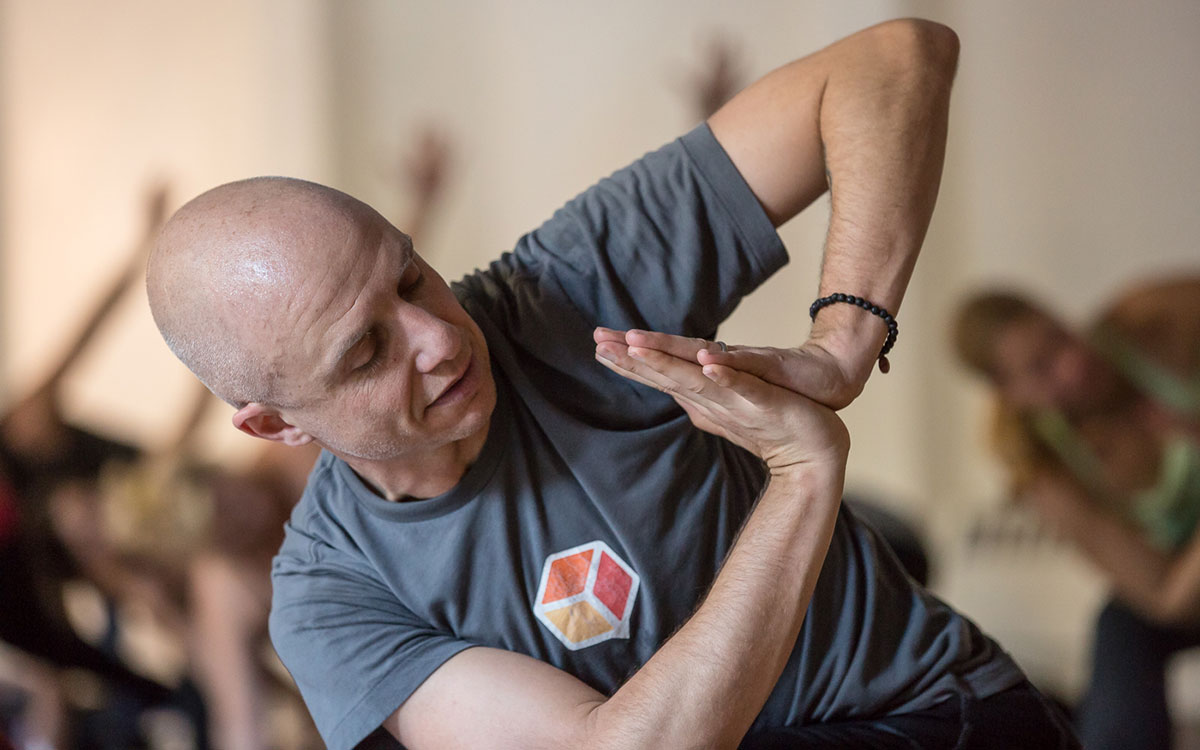Continuum: The Jazz of Somatic Movement Practices

What is Continuum? It’s a unique somatic practice that guides people through sensory awareness, movement, breath, and mindfulness. This approach to exploration and awareness of embodiment encourages curiosity, discernment, learning, growth, adaptation, healing, creativity, and so much more.
Continuum appreciates that the body is composed of mostly water, and explores the qualities of fluidity in all aspects of life and embodiment. The repertoire of movements in Continuum practice tend to be fluid, arcing, curving, spiraling, undulating—attempting to join and amplify the natural internal motions that our predominantly fluid bodies make.
Why Do Continuum?
Many meditators come to Continuum practice as a way of bringing their body into their meditation practice, which they experience as not including their body. Many movers (dancers, athletes, tai chi, or yoga practitioners, etc.) come to Continuum as a way to expand their sensory awareness and deepen their contemplative and interoceptive capacities (ability to tune into internal sensations) during movement.
Many bodyworkers and other healthcare practitioners come to Continuum to deepen their understanding, experience, and perception of the human body. The sensibility of Continuum can enrich and deepen all somatic and meditative practices, as well as all aspects of living and caring for oneself and others.
An Open-Ended Inquiry
Continuum is the jazz of somatic movement practices because it is improvised. Studies have shown that improvisational movement has a unique benefit for a variety of health concerns. The open-ended inquiry of Continuum practice offers a potential range of benefits that are not there if you are restrained by the form of a choreographed practice, and only do what you already know or have been told to do by others.
Jazz musicians riff on a theme by starting with a known song, and then the melody becomes totally transformed by their individual creative improvisation. In Continuum practice, the teacher might start a “riff” in a somatic exploration by having participants make a figure-eight motion with the torso, moving through the center of the heart—and the movements of each participant will morph as they improvise, based on their own embodied sensations and perceptions.
Honing the Skill of Flexibility
Cultivating the skill to do inner-directed movement is somewhat unique to Continuum. There aren’t many somatic practices that are guided by the improvisation of interoceptive curiosity. Continuum empowers participants to be self-referential and to be the author and authority of their own experience.
New movements and sensations lead to new perceptions, new thoughts, new actions, new possibilities in living. We have a better chance of finding health if we have broadened our capacity to breathe, move, think, feel, sense, and imagine other ways of being.
The body is dynamic; it is not an object with a static endpoint. As long as we are alive, we can practice fluidly improvising and adapting. Come join in the exploration.
Bonnie Gintis, DO, has synthesized her self-care approach from her experience as an osteopathic physician, her fluid movement explorations with Continuum, and her meditation practice.
Full Bio and Programs